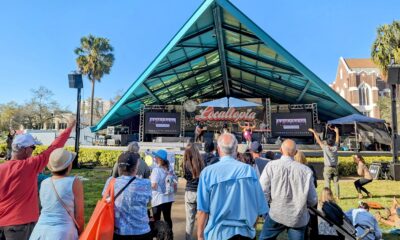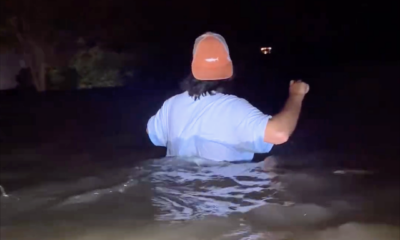Comm Voice
Community Voices: Tension between access and academic rigor at USF

Last week, candidates for the University of South Florida St. Petersburg regional chancellor position visited campus and discussed a number of topics of interest to various campus stakeholders. One recurring topic centered on the tension between access and academic rigor. As a campus liaison, I think it is important for our community to understand these competing demands.
On the one hand, our campus serves the local community and we want it to be the school of choice for our area’s university-bound young people. We want all residents to feel like the campus belongs to them, and we want every student to envision themselves here.
On the other hand, USF is classified as an R1 doctoral university with “very high research activity,” a distinction attained by only 2.5 percent of all post-secondary institutions. It is in the top 25 public universities in national research rankings. Additionally, USF gained status as a Preeminent State Research University by the Florida Board of Governors. It aspires to be a member of the American Association of Universities, an elite organization of the top research universities in the country, who are “distinguished by the breadth and quality of their programs of research and graduate education.”
Research universities tend to have a larger faculty and a wider range of majors to explore. For example, USF offers more than 200 undergraduate majors and concentrations across our three campuses. In addition, within a single field like biology, research universities tend to offer many subdisciplines like biochemistry, marine biology and biomedical engineering, for example. Research requires advanced equipment and facilities, larger libraries and cutting-edge labs.
High rankings offer the chance at millions of dollars in added funding each year, but also come with many requirements and expectations, including high student retention rates, hiring of nationally prominent faculty, and high admissions criteria for first-time-in-college students.
All this can be a major benefit to students who get accepted, but acceptances are at a higher threshold: Currently, USF’s average weighted GPA for fall admittance is 4.18, with an average SAT score of 1320.
Prior to consolidation in 2020, USF St. Petersburg was NOT classified as an R1 preeminent university, but was instead a regional university. The St. Petersburg campus admitted first-time-in-college students with a lower GPA and test scores than Tampa did, offering a broader chance for more local students to get admitted.
When campuses in St. Petersburg, Tampa and Sarasota merged into one accreditation in 2020, it also merged admissions criteria and processes. A centralized admissions office for USF recruits nationally and internationally, as well as regionally.
At a recent Suncoast Tiger Bay lunch discussion on the Future of Higher Education, USFSP Regional Chancellor Martin Tadlock described the ways we mitigate this tension.
“With the admissions profile so much higher, we rely on St. Petersburg College (SPC) to provide pathway options for students in our county and region, to come to USF,” Tadlock said. “We need programs like Pinellas Access to Higher Education (PATHE) that allow graduates from Pinellas County High Schools to receive support services and scholarships to go to SPC and then seamlessly transfer to USF.”
Transfer students are not held to the same admissions criteria as first-time-in-college students.
Other pathway programs for prospective students in our region to seek alternative entry options include the Guaranteed Access Pathway Program (GAPP) which offers guaranteed access for students from 17 Tampa Bay high schools with high numbers of students from low-income families. GAPP joins FUSE, a transfer program between USF and eight Florida state colleges that provides seamless academic pathways for students to complete their associate degree, guaranteeing admission into specific majors at USF. I’ve said this before, but the important thing is that students apply, because even if they don’t get in, our counselors can reach out and help students access these alternatives.
Our faculty have also had to adjust to the heightened research requirements of an R1 university. A research university demands more investment and resources, but also brings in more research dollars and opportunities for students and members of the community. For example, at USF St. Petersburg, we have the highest research generation of grants (and funding received from those grants) this year than in the history of our campus.
Going forward, USF St. Petersburg will need more research labs, more academic space and equipment in order to attract the best research faculty nationally. The future of this campus depends on the future of those resources.
It is a different world from the regional university we once were, but USF will continue to find ways to serve our region even as it rises nationally.
Caryn Nesmith is director of community relations at USF, a position jointly funded by the St. Petersburg Downtown Partnership, the St. Petersburg Innovation District, the City of St. Petersburg and USF. This is a series focused on USF and its role in our community, serving to strengthen the prosperity of St. Petersburg and Pinellas County. You can contact Caryn at ca****@*sf.edu







